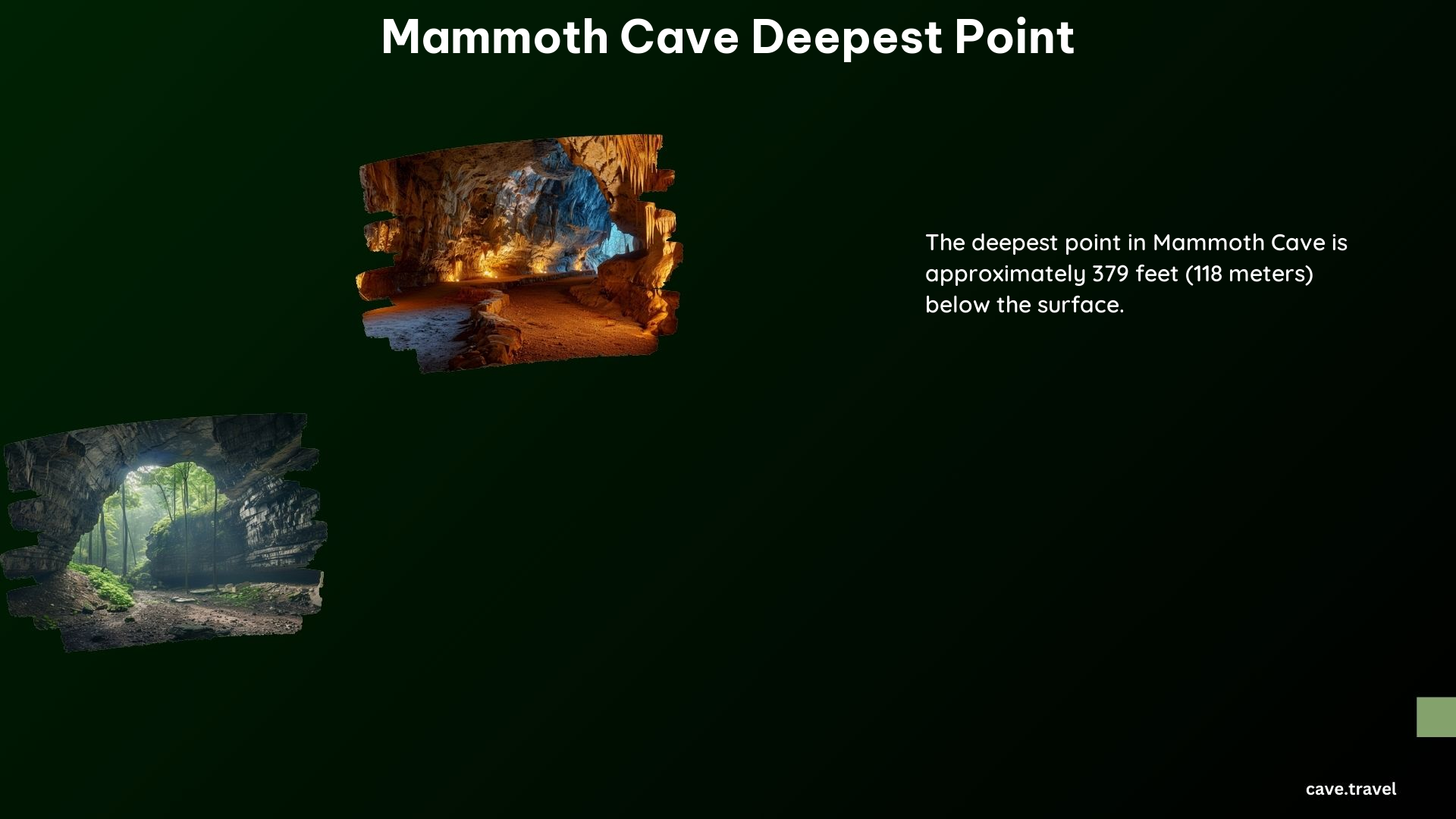Mammoth Cave, located in Mammoth Cave National Park in Kentucky, is the longest known cave system in the world, stretching over 426 miles (686 kilometers). Within this vast underground network, the deepest point of Mammoth Cave is approximately 300 feet (91 meters) below the surface, making it a true wonder of nature.
The Deepest Point of Mammoth Cave

The deepest point of Mammoth Cave is located approximately 300 feet (91 meters) below the surface. This remarkable depth is the result of millions of years of geological processes that have shaped the cave system over time.
The cave’s depth is primarily due to the thick Mississippian-aged limestone strata that the cave has developed in. This limestone, capped by a layer of sandstone, has provided a stable foundation for the cave’s formation and growth, allowing it to reach such impressive depths.
Exploring the Lowest Elevation of Mammoth Cave

While the deepest point of Mammoth Cave is 300 feet (91 meters) below the surface, the lowest elevation of the cave system is around 500 feet (152 meters) above sea level. This means that the total depth of the cave, from the highest entrance to the lowest point, is approximately 1,000 feet (305 meters).
The ability to explore these lower regions of the cave system is a testament to the dedication and skill of the Cave Research Foundation (CRF), which has been mapping and exploring Mammoth Cave since the late 1950s. Through their efforts, the length and depth of the cave system have been continuously expanded, revealing new wonders and challenges for cavers and researchers alike.
The Geological Wonders of Mammoth Cave
The depth and length of Mammoth Cave are not the only remarkable features of this natural wonder. The cave’s geology is also a source of fascination for visitors and researchers alike.
The cave system has developed in thick Mississippian-aged limestone strata, which has provided a stable foundation for the cave’s formation and growth. This limestone is capped by a layer of sandstone, which has helped to preserve the cave’s structure and prevent it from collapsing.
Over millions of years, the cave has been shaped by the flow of water, the erosion of the limestone, and the deposition of various minerals. This has resulted in the creation of a vast array of geological features, including stalactites, stalagmites, and other cave formations that are a delight to explore.
Beneath Your Feet: Exploring the Geological Wonders of Mammoth Cave
For visitors to Mammoth Cave National Park, the “Beneath Your Feet” program offers a unique opportunity to delve into the geological wonders of the cave system. Through interactive exhibits and videos, visitors can learn about the formation of the cave, the diverse ecosystems that thrive within it, and the ongoing efforts to explore and protect this natural treasure.
One of the highlights of the “Beneath Your Feet” program is the chance to see the cave’s geological features up close. Visitors can marvel at the intricate stalactites and stalagmites that have been formed over thousands of years, and learn about the unique adaptations of the cave’s diverse wildlife.
Mammoth Cave: A UNESCO World Heritage Site and International Biosphere Reserve
Mammoth Cave National Park is not only a remarkable natural wonder, but it is also recognized for its global significance. In 1981, the park was designated a UNESCO World Heritage Site, recognizing its exceptional natural beauty and geological importance.
In addition to its UNESCO designation, Mammoth Cave National Park is also an international biosphere reserve, highlighting its diverse ecosystems and importance for conservation. The park is home to a wide range of plant and animal species, many of which are found nowhere else on Earth.
Conclusion
The Mammoth Cave Deepest Point, located approximately 300 feet (91 meters) below the surface, is a testament to the incredible geological processes that have shaped this remarkable cave system over millions of years. From its vast length and depth to its stunning geological features and diverse ecosystems, Mammoth Cave National Park is a true wonder of nature that continues to captivate and inspire visitors from around the world.
